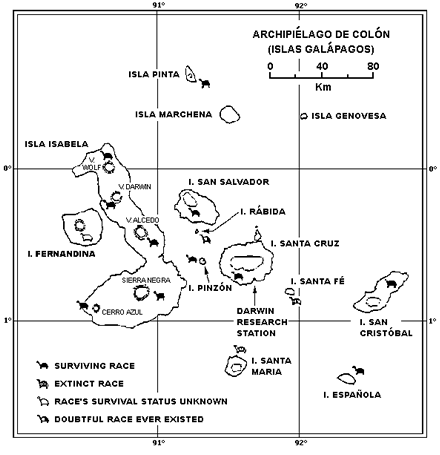ADAPTATION AND EVOLUTION
What is Evolution?
How the organism have evolved from earlier ancestors
All the Galapagos tortoises have ancestors from mainland South America. According to genetic studies and research, their closest living sibling/relative is the Chaco tortoises of Argentina and Paraguay. The divergence between these two species apparently happened around 6-12 million years ago (C. chilensis and C. nigra). (Caccone) Some people question about how they made the journey from the mainland to the islands this easily prior to technology. They made it, because they can breathe above water as they can extend their neck and being able to survive without any food or water for a lot of months. (Seybold) The Galapagos tortoise is an example of a species that has undergone adaptive radiation. For example: tortoises in the Galapagos have two different shapes of shells, and each have adapted differently in their natural habitats due to adaptive radiation. (Meijer) Some have the saddle-back shell, which makes it easier for the tortoise to lift their heads and eat vegetation, and also win arguments in social interactions, that decided which turtle gets the food. The other type of shell is the dome-shaped one, which are for turtles that live in an area where all the vegetation is near ground level and makes it unnecessary for them to raise their heads. (Galapagos Tortoises and Evolution) The Galapagos and the Aladabra giant tortoises are the only remaining giant tortoises left on earth, as fossil remains have shown a large amount of giant tortoises use to exist in Europe, Asia, Africa, and North America. (Meijer)

Map of the distribution of the other turtles that led to the creation of the C.Nigra







